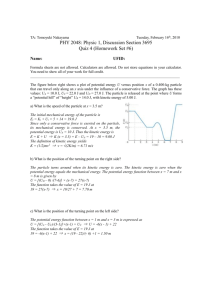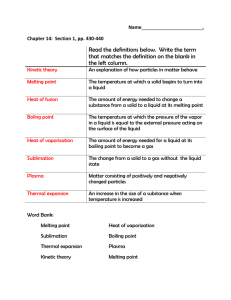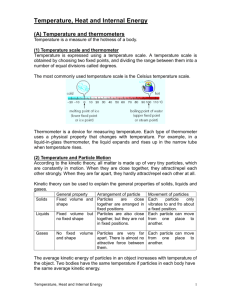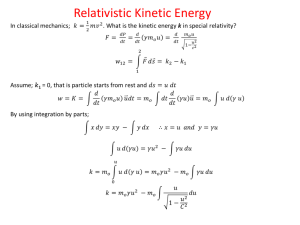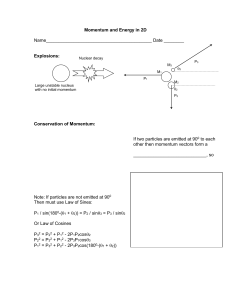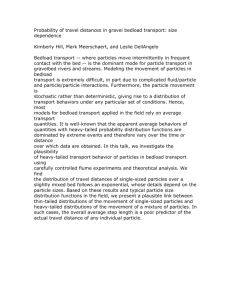Assignment 2 - due Jan. 25
advertisement
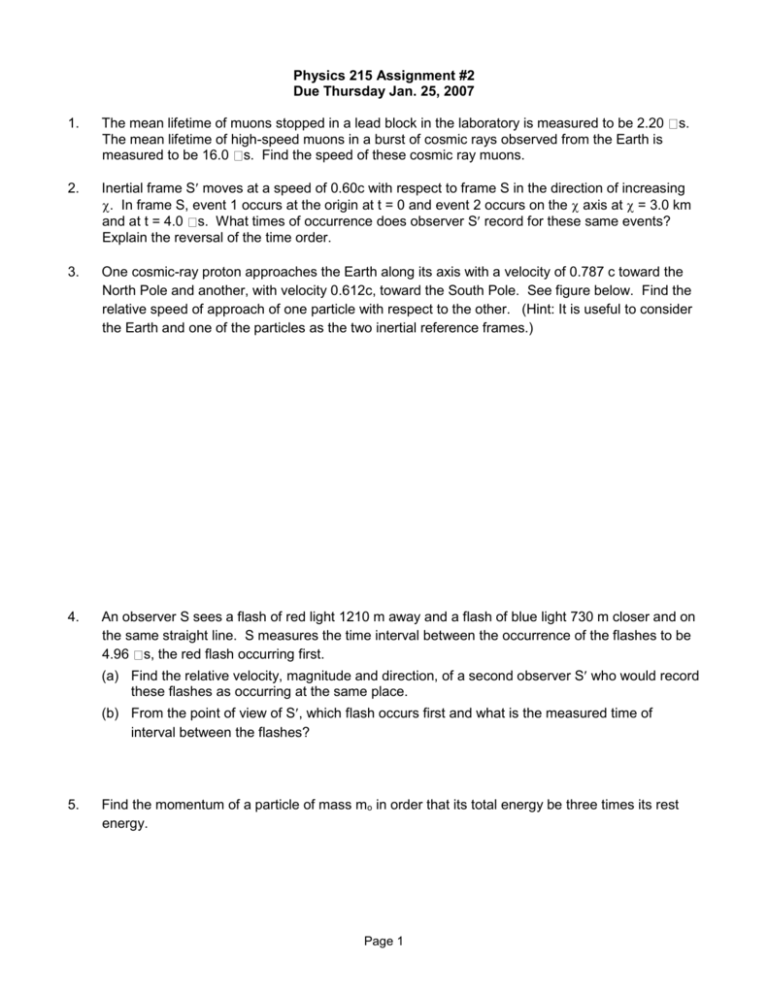
Physics 215 Assignment #2 Due Thursday Jan. 25, 2007 1. The mean lifetime of muons stopped in a lead block in the laboratory is measured to be 2.20 The mean lifetime of high-speed muons in a burst of cosmic rays observed from the Earth is measured to be 16.0 s. Find the speed of these cosmic ray muons. s. 2. Inertial frame S moves at a speed of 0.60c with respect to frame S in the direction of increasing . In frame S, event 1 occurs at the origin at t = 0 and event 2 occurs on the axis at = 3.0 km and at t = 4.0 s. What times of occurrence does observer S record for these same events? Explain the reversal of the time order. 3. One cosmic-ray proton approaches the Earth along its axis with a velocity of 0.787 c toward the North Pole and another, with velocity 0.612c, toward the South Pole. See figure below. Find the relative speed of approach of one particle with respect to the other. (Hint: It is useful to consider the Earth and one of the particles as the two inertial reference frames.) 4. An observer S sees a flash of red light 1210 m away and a flash of blue light 730 m closer and on the same straight line. S measures the time interval between the occurrence of the flashes to be 4.96 s, the red flash occurring first. (a) Find the relative velocity, magnitude and direction, of a second observer S who would record these flashes as occurring at the same place. (b) From the point of view of S, which flash occurs first and what is the measured time of interval between the flashes? 5. Find the momentum of a particle of mass mo in order that its total energy be three times its rest energy. Page 1 6. (a) If the kinetic energy K and the momentum of p of a particle can be measured, it should be possible to find its mass mo and thus identify the particle. Show that mo pc K2 2Kc2 2 (b) What does this expression reduce to as v/c 0, in which v is the speed of the particle? (c) Find the mass of a particle whose kinetic energy is 55.0 MeV and whose momentum is 121 MeV/c; express your answer in terms of the mass me of the electron. 7. (a) In modern experimental high-energy physics, energetic particles are made to circulate in opposite directions in so-called storage rings and permitted to collide head-on. In this arrangement each particle has the same kinetic energy K in the laboratory. The collisions may be viewed as totally in-elastic, in that the rest energy of the two colliding particles, plus all available kinetic energy, can be used to generate new particles and to endow them with kinetic energy. Show that the available energy in this arrangement can be written in the form K E new = 2mo c2 1+ 2 mo c where mo is the mass of the colliding particles. (b) How much energy is made available when 100-GeV protons are used in this fashion? (c) What proton energy would be required to make 100 GeV available? Page 2

